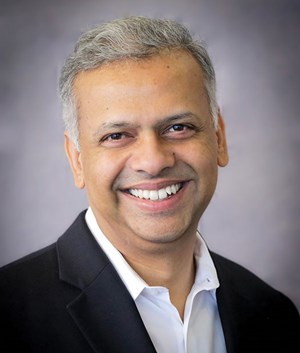Weatherford’s CEO sees energy transition, digital transformation as top OFS priorities going forward
World Oil (WO): Now that the rough year of 2020 is past us, and you look forward into 2021, is it fair to say that the areas on your mind are the so-called “include the “energy transition”; digitalization and remote field operations; what the OFS sector looks like, post-Covid; and using technology to greatly improve safety of operations?
Girish Saligram (GS): You’re absolutely spot-on. These are all fundamental themes that we have to address with all of our peers, as well as with all of our customers. And the output metric on all of those really is, most importantly, safety, which is of paramount importance in the industry. And then, important, as well, is the financial health and liability of all of us, making sure that we’re delivering sustainable profitability and free cash flow generation.
WO: Regarding the energy transition, most analysts seem to think that it will be fulfilled by range of dates between 2040 and 2050. What is your thought on when this transition is most likely to take hold?
GS: My personal view on it—I’m not smart enough to say when it’s going to be over—is that the transition is underway right now. And what’s really important is to recognize that it is underway, it’s accelerating, and all of us have a role to play in it. So, look, whether the transition is going to last 20 years, or it’s going to last 10 years, or 30 years, I don’t think we can tell. But what we’ve all got to do is really focus on a couple of things in my mind.
The first one is, what role do we play on existing [oil and gas] production, which is going to continue to have a very significant portion of the overall energy production in the world. So, how do you make that more sustainable, how do you help our customers and operators get better at reducing their carbon footprints, and become more efficient. As we look at the transition by itself, how do we diversify, how do we move into alternative forms of energy? And for an oilfield services company like ourselves, applications, such as CCUS, become an important part of it. We’ve got a portfolio of tools and technologies that play into that. Applications, such as geothermal, as an example, become really interesting, because we bring a variety of different technologies, like managed pressure drilling, tubular running, wireline completion services, etc., to that space that also make a big impact and difference. So, I think the bottom line is that it’s not that important to predict how long it (the transition) is going to last versus what are we doing to it.
WO: Following up on those thoughts, what steps are you taking within Weatherford, to address the energy transition? How are you already preparing to participate?
GS: We look at it, and view it as a situation, where we have a significant role to play, not just for ourselves as a company, but also for our customers and for all of our partners. Our technology portfolio is really what enables us to drive integrated solutions, to apply a full suite of offerings that allows us to optimize our carbon footprint and make improvements in our customer operations. So, it ranges from the somewhat routine and mundane to things like reducing personnel onboard, and reducing the number of miles you drive, which have a direct impact on your carbon footprint.
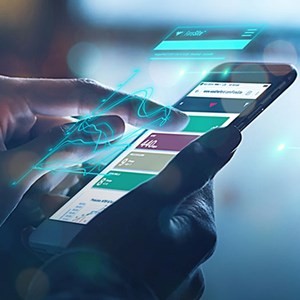
But then, in a more sophisticated fashion, how do we bring technologies to bear, to actually reduce drilling cycle times, and we’ve got a lot of that available in our portfolio. We’ve got a production optimization platform, ForeSite (Fig. 1), which we have deployed very successfully, which really increases the amount of production that a customer gets from a series of wells that they have. For example, we’ve got a site in Indonesia, where we have increased up-time by about 40% and increased production by about that same amount. That has a direct impact on the sustainability of the customer’s operations, because they need to drill less, and they can
prolong the cycle times. So, it’s things like this, the technologies that we bring to bear, that really have a fundamental impact on sustainability, and have a role to play in this transition.
WO: Another buzzword term that is bandied about by virtually everyone in the global upstream sector is “digital transformation.” What does that term mean to you, and how does it relate to Weatherford?
GS: It’s a great question. Today, there’s a lot of usage of the term, and a lot of bandying about, a lot of hype, etc. But until, and unless, we can deliver tangible solutions to customers that have a direct and tangible impact on their bottom lines, and improve the efficacy of their operations, it’s not real. One of the things that we are proudest of at Weatherford is the ability to actually deliver tangible solutions.
Let me give you a couple of different examples of how we have done this. But before I get into that, at a macro level, the way we think about digital transformation is really convergence. That’s what it comes down to for us—it’s the convergence of automation, artificial intelligence, new technology and software. But then, couple all of that with the main expertise in what we fundamentally know best, which is oilfield services, which is drilling, which is thermodynamics, which is good old-fashioned mechanical integrity. All of those things coming together are digital transformation, but it’s doing them in a way that enables us to harness new technologies like AI and automation, and make operations better.
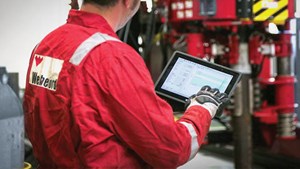
So, just a couple of examples that we have deployed in our operations now. I mentioned our ForeSite production optimization platform earlier. This is technology-agnostic. It can be paired with any controller, variable-speed drive, or modeling software. We can really gather a tremendous amount of data from a customer’s operation, set performance parameters, trigger alarms and really give them sophisticated recommendations to drive their systems, so that they can enhance their production. We’ve got a solution in tubular running services called Vero (Fig. 2), which is all about automated connection integrity. If you think about it, especially for an offshore application, one of the biggest challenges there is reducing personnel onboard. And then you’ve got an application like TRS, that can be dangerous, and it is one of the most significant applications, which causes pinched extremities, broken fingers, etc.
Here, now, we’ve got a solution that is fully automated. We use artificial intelligence to really drive the connectivity and to ensure the integrity of the connections. This eliminates errors and removes human judgment, but most importantly, it takes people out of the red zone. That’s a big, big factor. So, you’re not only getting a cost improvement, or getting better efficiency and better connections, you’re dramatically improving safety, as well. We are then using software and remote technology to deploy solutions, using our AccuView platform, which allows us to perform real-time remote support to operations such as liner-hanger installations, fishing, and re-entry. And again, all of these things that I’m talking about are things that we have in production, that we have deployed successfully at multiple sites around the world. So, this is what I mean, when I say it’s about delivering tangible value that ultimately has a direct impact, not just for us but also for our customers.
WO: What are some steps and initiatives that you are taking, or plan to take, to more fully harness digitalization?
GS: What we are really focused on is building an entire ecosystem around digital platforms. And if you think about the ecosystem, what you really need are a couple of different things to make it work. The first is you need a user base, and that’s really our customers, when you think about it. The second piece that you need is a platform, and we think we bring that, for example, like I mentioned, with ForeSite. And then you need standards, which allow you the ubiquity of the plug-and-play type of application. So, that’s a big task for us, expanding our platform to cover multiple, different applications.
As an example, we launched a three-phase flowmeter, which we branded onto the ForeSite umbrella. And this really obviates a significant need for three-phase separation, and the really cool thing about it is it eliminates the nuclear source that exists inside a traditional, conventional flowmeter. Not only is it a tremendous opex and capex savings for customers, it’s also a great sustainability story, because it is really a positive thing for the environment. You’re reducing risk by taking out the nuclear source. So, it’s technology that in a very broad sense is digital, but it’s really back to this notion of convergence.
WO: How does the digitalization effort relate to remote field operations? In the Covid-19 era, being able to operate facilities and functions is more important to the upstream than ever, right?
GS: Yes, absolutely. Look, I think Covid 19, once you look beyond the obvious and tragic suffering that it has inflicted on so many different people around the world, the one thing that it has done, as a bit of by-product for years to come, will be the accelerated adoption of digital technologies, especially in our sector. And this notion of remote operations is one of them. Everyone’s familiar now with the concept of remote collaboration while working at home—people using Teams, using Zoom, etc., that it’s become common parlance, and everyone’s comfortable with it.
This is an industry that first of all, is inherently operating in tough and dangerous conditions. Secondly, you’re operating in some of the most remote areas of the world. And typically, you always needed to have people on the ground. And so, what the pandemic has accelerated is the adoption of that remote technology. A great example is AccuView, which I mentioned before. This platform allows us to provide 24/7, remote support and expertise to our sites around the world. People can log into the system, they can access current data, they can access history. You’ve got the benefit here of deep-domain expertise and decades of knowledge that go into it, that allow us to provide real-time decisions that people can make, that guarantee it.
What it also does, it removes the need for having experts, who are constantly on a plane, at the airport, and it dramatically improves efficiencies. So, you can have an expert in a particular application spend a few hours in the morning, helping a customer in the Middle East, then turn around and help someone in South America. Normally, that would mean going to the Middle East for a week, then turning around and flying again.
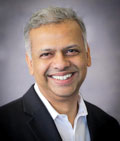
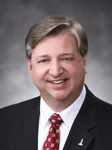
- Executive viewpoint: Investing in existing oil & gas fields is key to energy security and net-zero goals (November 2025)
- Engineering for the deep: Human support and rescue systems (November 2025)
- First Oil: A grand plan designed for U.S. offshore leasing (November 2025)
- Industrial Intelligence: At Weatherford, data drives the bit and everything after (October 2025)
- ZRF: The Zero Routine Flaring by 2030 initiative (October 2025)
- Regional Report: Mega-transitions are underway in the Middle East (October 2025)
- Subsea technology- Corrosion monitoring: From failure to success (February 2024)
- Applying ultra-deep LWD resistivity technology successfully in a SAGD operation (May 2019)
- Adoption of wireless intelligent completions advances (May 2019)
- Majors double down as takeaway crunch eases (April 2019)
- What’s new in well logging and formation evaluation (April 2019)
- Qualification of a 20,000-psi subsea BOP: A collaborative approach (February 2019)

